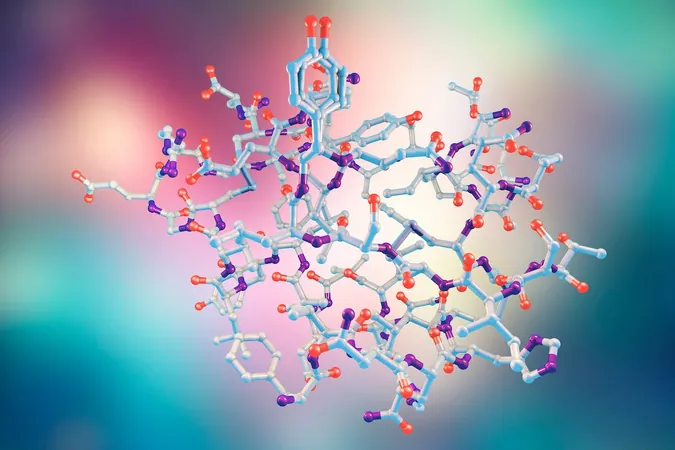
Breakthrough Discovery: Could Protein's Role in Insulin Signaling Redefine Gene Therapy for Diabetes and Neurodegenerative Diseases?
2024-10-04
Introduction
In a groundbreaking study published in the Journal of Neuroendocrinology, researchers have identified Protein Tyrosine Phosphatase Receptor Type J (PTPRJ) as a significant negative regulator of insulin signaling specifically within neuronal cells.
Research Significance
This discovery not only sheds light on its role in neuronal development but also hints at transformative approaches for gene therapy in combating insulin resistance-associated diseases.
Key Findings
Lead researcher Dr. Kai Kappert from Charité University Medicine Berlin and his team emphasized the correlation between Type 2 Diabetes (T2D) and insulin resistance.
Insulin Resistance in the Brain
While insulin resistance is mainly recognized within insulin-sensitive organs such as the liver and muscles, their study reveals that it can also manifest in the brain independently of peripheral resistance.
Connection to Cognitive Impairments
Dr. Kappert noted, "Our findings suggest that central insulin resistance might be a fundamental link between T2D, obesity, and various cognitive impairments," underscoring the urgency of understanding this connection.
Exploring Protein Tyrosine Phosphatases
The study delves into the family of protein tyrosine phosphatases (PTPs), critical enzymes that modulate numerous metabolic signaling pathways.
Targeting PTPRJ
Their focus on PTPRJ has revealed its fascinating role as a negative regulator of insulin signaling in mouse models.
Impact on Neuronal Cells
Past investigations led by Kappert highlighted that mice lacking PTPRJ showed enhanced insulin sensitivity, improved glucose tolerance, and reduced body weight.
Gene Editing and PTPRJ Knockout Model
Kappert's team conducted gene editing to create a PTPRJ knockout model using the murine neuroblast cell line Neuro2a.
Direct Interaction Confirmation
Through a proximity ligation assay, the researchers confirmed a direct interaction between PTPRJ and INSR in neuronal contexts.
RNA Sequencing Insights
The team performed RNA sequencing, which indicated that numerous genes associated with glucose uptake, metabolism, and lipid synthesis were upregulated in PTPRJ-deficient cells.
Role in Calcium Regulation
They identified 16 Calcium ion (Ca2+) transporters that were differentially expressed, hinting at PTPRJ's crucial role in neurotransmission.
Cellular Stress Factors
The research unveiled elevated levels of genes related to endoplasmic reticulum stress in the PTPRJ knockout cells.
Significance of PTPRJ
The significance of these findings cannot be overstated; PTPRJ is pivotal in managing insulin signaling and facilitating neuritogenesis.
Potential Therapeutic Strategies
This exciting new understanding could pave the way for groundbreaking therapeutic strategies for a range of diseases, including T2D, obesity, and neurodegeneration.
Conclusion
Stay tuned as we continue to monitor this critical field of research, which might just revolutionize treatments for millions worldwide!


 Brasil (PT)
Brasil (PT)
 Canada (EN)
Canada (EN)
 Chile (ES)
Chile (ES)
 España (ES)
España (ES)
 France (FR)
France (FR)
 Hong Kong (EN)
Hong Kong (EN)
 Italia (IT)
Italia (IT)
 日本 (JA)
日本 (JA)
 Magyarország (HU)
Magyarország (HU)
 Norge (NO)
Norge (NO)
 Polska (PL)
Polska (PL)
 Schweiz (DE)
Schweiz (DE)
 Singapore (EN)
Singapore (EN)
 Sverige (SV)
Sverige (SV)
 Suomi (FI)
Suomi (FI)
 Türkiye (TR)
Türkiye (TR)